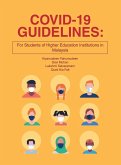Eight democratic countries traversed the road to remarkable containment of COVID-19 in 2020-2021, five without economically damaging shutdowns. During the first two years of the pandemic, the United States and the United Kingdom each had COVID-19 death rates per population 6 times higher than any one of these eight countries and more than 135 times the best. Why? This book reveals successes and mistakes in science, governmental policies, and politics that vastly altered the incidence and severity of COVID-19 in different parts of the world. The author explains his research in a near conversational, human-focused approach understandable to nonscientists. The topics range from the nature of coronaviruses to the economic consequences of the pandemic. The movement toward a "new normal" of living with the virus is dangerous, he writes. Without recognition of governmental policy failures and implementation of new science-based policies, periodic surges in infections will continue and more lethal mutations cannot be ruled out.
Bitte wählen Sie Ihr Anliegen aus.
Rechnungen
Retourenschein anfordern
Bestellstatus
Storno








